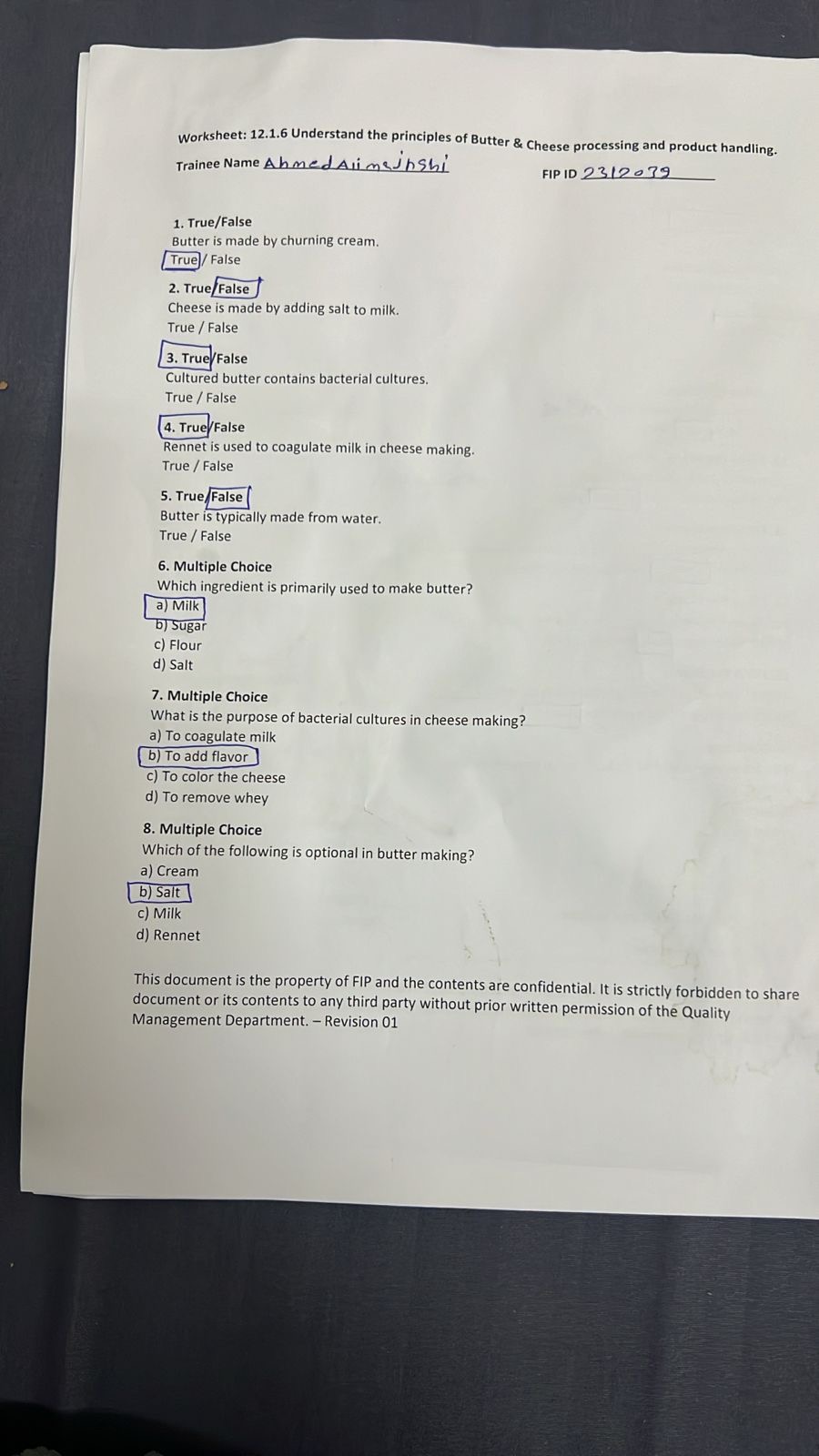1. True/False: Butter is made by churning cream. 2. True/False: Cheese is made by adding salt to milk. 3. True/False: Cultured butter contains bacterial cultures. 4. True/False: Re... 1. True/False: Butter is made by churning cream. 2. True/False: Cheese is made by adding salt to milk. 3. True/False: Cultured butter contains bacterial cultures. 4. True/False: Rennet is used to coagulate milk in cheese making. 5. True/False: Butter is typically made from water. 6. Multiple Choice: Which ingredient is primarily used to make butter? a) Milk b) Sugar c) Flour d) Salt 7. Multiple Choice: What is the purpose of bacterial cultures in cheese making? a) To coagulate milk b) To add flavor c) To color the cheese d) To remove whey 8. Multiple Choice: Which of the following is optional in butter making? a) Cream b) Salt c) Milk d) Rennet

Understand the Problem
The question is asking about the principles of butter and cheese processing as outlined in a worksheet. It includes true/false statements and multiple choice questions related to ingredient usage and processes in butter and cheese production.
Answer
1. True, 2. False, 3. True, 4. True, 5. False, 6. a) Milk, 7. b) To add flavor, 8. b) Salt
- True, 2. False, 3. True, 4. True, 5. False, 6. a) Milk, 7. b) To add flavor, 8. b) Salt
Answer for screen readers
- True, 2. False, 3. True, 4. True, 5. False, 6. a) Milk, 7. b) To add flavor, 8. b) Salt
More Information
Butter is made by churning cream, while cheese involves more complex processes including bacterial cultures and enzymes like rennet. Butter typically starts with cream, not water. Salt is an optional ingredient in butter making.
Tips
A common mistake is confusing the cheese-making process with adding just salt; it involves more steps including the addition of rennet and bacterial cultures.
Sources
- Butter Science 101 - Center for Dairy Research - cdr.wisc.edu
- Making Cultured Butter with Raw Milk - New England Cheesemaking - cheesemaking.com
- Amazon.com: Microbial Rennet For Cheese Making | Milk Coagulant - amazon.com
AI-generated content may contain errors. Please verify critical information